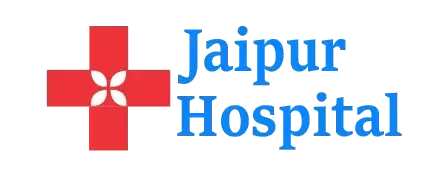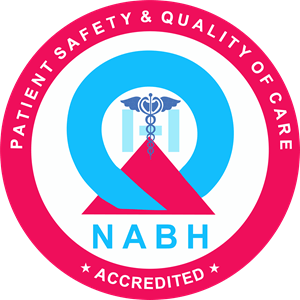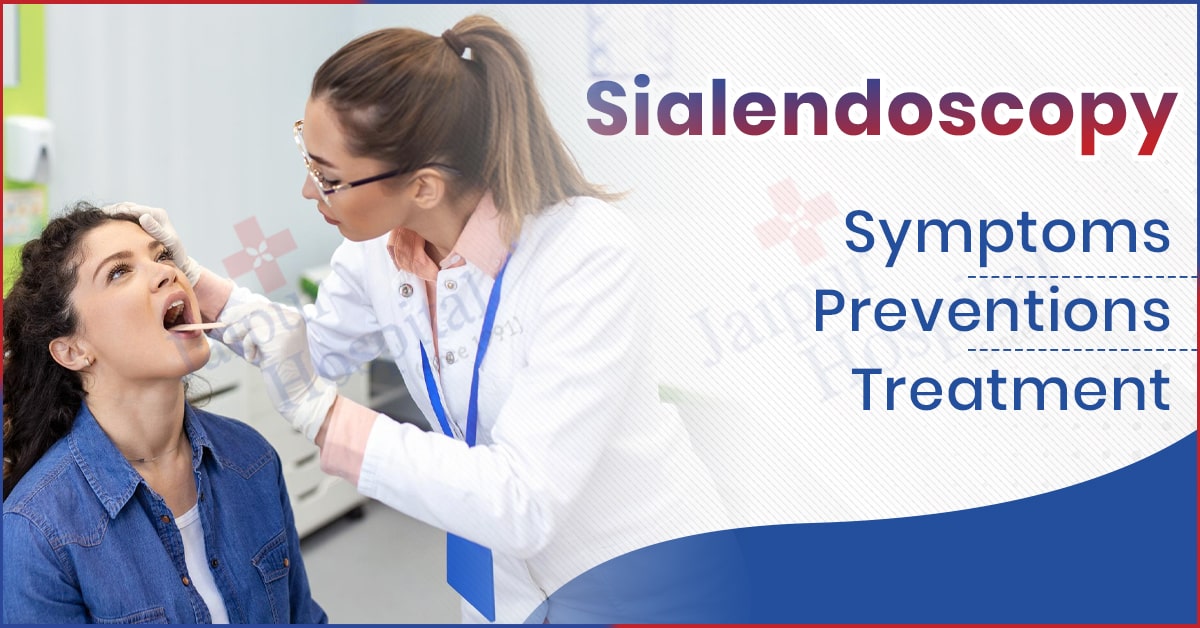Introduction
Sialendoscopy is an innovative and minimally invasive approach that has altered the landscape of diagnosis and therapy for salivary gland diseases. From direct visualization of the salivary ducts to treatment of salivary stones, ductal strictures, or chronic gland infections, it would accomplish these tasks effortlessly with great precision and minimal discomfort.
In contrast to other surgical procedures, sialendoscopy preserves the anatomical and physiological integrity of the salivary glands and thereby provides cupcake recovery with minimal side effects. In this article, we will discuss various angles of sialendoscopy, such as indications, procedure, benefits, risks, recovery, and how to select an appropriate hospital for your treatment.
What is sialendoscopy?
Sialendoscopy is a minimally invasive endoscopic technique used to view, identify, and administer therapy for conditions affecting the salivary ducts. A thin, flexible tube called a sialendoscope is inserted into the salivary duct to view or visualize the ductal system. It is a real-time method in assessing and also treating obstructions in the system, such as salivary stones, infection, or narrowing (strictures), and often, it can treat without having to resort to open surgery.
You Can Read Also: Benefits of a Sugar-Free Diet and Easy Ways to Achieve It
Symptoms You Shouldn’t Ignore
Your body gives warning signs when a situation may be on the downside. Please, never ignore them. They can get worse and may become life-threatening. Here are some of the major symptomologies that need treatment:
- Unexplained Weight Loss: A Sudden drop in weight without any changes in one’s eating habits or physical activity pattern may be pointing to thyroid problems, diabetes, or some kinds of cancers.
- Constant Fatigue: Here, one is tired all the time, even with sufficient rest; it could be anemia, sleep disorders, or chronic ailments.
- Shortness of Breath: Breathlessness in almost a mild activity or rest could be an alarm of risk to heart or lung conditions.
- Chest Pain: Either pressure, tightness, or pain in the chest must be treated as a potential emergency.
- Persistent Headaches: Very frequent headaches that are severe and not similar to your usual headaches could be an indicator of neurological issues.
- Vision Changes: Blurred, double, or sudden loss of vision could suggest stroke or eye diseases.
- Lumps or Swellings: New lumps are to be evaluated by the doctor or lumps that are increasing in size, especially if painless.
- Blood in Urine, Stool, or Cough: Infected bleeding might be the sign of infections, ulcers, or even cancer.
- Persistent Fever or Night Sweats: Long-term fever may be suggestive of an infection of an autoimmune disorder, or cancer.
- Difficulty Swallowing or Hoarseness: These may be linked to throat, esophagus, or thyroid issues.
Common Causes of Salivary Gland Blockages
When any kind of interruption in the salivary flow is present, this condition triggers pain and swelling, with occasional infections. These may affect parotid, submandibular, or sublingual glands. They include:
- Salivary Stones (Sialolithiasis): Calcium deposits in the ducts of salivary glands, impeding the flow of saliva and causing pain, especially during eating.
- Mucous Plugs: Thickened mucus, which may be due to dehydration, medicines, or poor oral hygiene, forms a plug blocking the ducts.
- Ductal Strictures (Narrowing): Scarring or inflammation causes narrowing of the salivary ducts, resulting in a reduction or stoppage of saliva flow.
- Chronic Infections (Sialadenitis): Persistent bacterial or viral infection causes inflammation and swelling, resulting in obstruction of the ducts.
- Tumors (Benign or Malignant): Tumors growing near or within the glands can sometimes compress or block the ducts, though this is a much less common cause.
- Trauma or Injury: Any facial injuries, surgical procedures, or dental interventions may result in duct damage and eventual obstruction.
- Autoimmune Diseases (e.g., Sjögren’s Syndrome): Herein, the body’s immune system attacks the salivary glands, sap saliva production, and causes blockages.
You Can Read Also: Top Fruits to Help Manage Diabetes Naturally Control Your Blood Sugar
Understanding Salivary Gland Disorders
According to Salvin, there are multiple disorders of the salivary gland, thereby sometimes hindering digestion, oral hygiene, and comfort. Some of the common forms include:
Sialolithiasis: Ducts blocked by salivary stones with pain and swelling, especially during meals.
- Sialadenitis: Inflamed and painful glands due to bacterial infections that sometimes bring about a fever or pus formation.
- Viral Infections (like Mumps): Parotid swelling, fever, and fatigue.
- Cysts and Benign Tumors: Non-malignant lumps or fluid-filled sacs that cause swelling.
- Malignant Tumors: Extremely rare but dangerous, presenting as firm and painless lumps that warrant immediate attention.
- Autoimmune Disorders (like Sjögren’s Syndrome): Dry mouth, dry eyes, and swollen glands due to the immune system attacking them.
When Should You Consider Sialendoscopy?
Sialendoscopy is a secure and minimally invasive modality used to diagnose and treat salivary gland disorders. It provides an environment where physicians can directly visualize and tackle any issues inside the salivary ducts without undergoing major surgeries. You should undergo sialendoscopy if any of the following apply to you:
- Intermittent Swelling in Salivary Glands: Swelling that is present or absent in the cheek, jaw, or below the tongue, especially around mealtimes, is suggestive of blockage or stone in the salivary ducts.
- Continued Pain in Salivary Glands: Duct obstruction and infection could be responsible for recurrent pain or ongoing discomfort in the region of the parotid or submandibular glands, particularly during eating.
- Long-Term Dry Mouth or Low Saliva Production: An atypical drying of the mouth that has nothing to do with dehydration or the effects of medications may occur due to blocked or narrowed ducts.
- Repeated Salivary Gland Infections (Sialadenitis): Repeated infections occurring in the salivary glands poorly responsive to antibiotics call for an evaluation by sialendoscopy.
- Suspected Salivary Stone (Sialolithiasis): Once imaging studies considered sialolithiasis possible, sialendoscopy forms a method to locate stones and remove them.
- Ductal Strictures or Narrowing: Where duct scarring and inflammation occur, these lead to duct narrowing; sialendoscopy can be applied to dilate the duct and restore saliva flow.
- Unexplained Lump or Mass in the Salivary Area: Not always used in tumor diagnosis, sialendoscopy may be included when other imaging methods do not lead to a conclusive diagnosis.
Alternative Treatments and Home Remedies
Because procedures like sialendoscopy generally become necessary for adequate diagnosis and treatment of complex salivary gland conditions, mild or early symptoms often get treated with supportive care and natural remedies. Some effective alternative treatments and home remedies include these:
- Warm Compresses: A hot compress, when applied to the swollen part of the face a couple of times a day, usually improves circulation and drainage of the blocked gland.
- Gentle Massage: When containing sialoliths or minor blockage, gentle massage of the affected gland in a circular motion toward the duct opening (generally inside the mouth) may aid their dislodging.
- Keep Hydrated: Water keeps saliva thin and simultaneously washes away irritants or debris that contribute to blockage.
- Sour Candies or Lemon Drops: Sucking sour candies encourages saliva production which pushes out small stones or clears minor obstructions.
- Good Oral Hygiene: Brushing, flossing, and rinsing with an antiseptic mouthwash may also prevent infections that could lead to salivary gland problems.
- Anti-Inflammatory Diet: Eating foods rich in antioxidants and omega-3 fatty acids may reduce inflammation and better support gland health.
Recovery and Aftercare Tips Post-Procedure
Once the sialendoscopy has been performed, aftercare is very important to ensure the patient will have a smooth recovery. Some brief tips are as follows:
- Medical Advice: Take all prescribed medications and follow the instructions given by your doctor.
- Compresses: Apply cold compresses for 24 hours; hot compresses may be used for months.
- Hydration: Keep well hydrated to encourage proper flow of saliva and keep the ducts clear from debris.
- Foods to Eat: Go for soft and nonspicy foods that will not irritate the healing ducts.
- Saliva Stimulation: Sugar-free chewing gum will help; suck on lemon drops.
- Oral Hygiene: Brush gently with warm salt water.
- Avoid Irritants: Nothing should touch your mouth during recovery; that would include alcohol and smoking.
- Watch for Troubles: Any sign of infection, like unusual swelling, fever, or discharge, should be reported to the doctor.
How Sialendoscopy Works: Step-by-Step Procedure
Sialendoscopy is a minimally invasive method to diagnose and treat disorders occurring within the salivary ducts, mainly in the parotid or submandibular glands. Here is a brief overview of the procedure:
- Preparation: Imaging tests such as ultrasound and CT scan are done to locate the problem. Then anesthesia will be administered, and the area will be made sterile.
- Accessing the Duct: The opening of the duct inside the mouth is found and gently dilated using a probe or dilator.
- Endoscope Insertion: A thin and flexible scope with a tiny camera is inserted inside the duct, relaying live visuals.
- Diagnosis: The doctor looks for any stones, strictures, or inflammation, making video records of suspicious areas if needed.
- Treatment: Stones are removed or crushed, narrow ducts dilated, and the ducts may be rinsed with saline or antiseptic solution.
- Post-Procedure: Then, the small scope is withdrawn; no external cuts are involved in this procedure. It usually takes around 30 to 60 minutes, and the patient is discharged on the same day.
Conclusion
Sialendoscopy has revolutionized the diagnosis and treatment of salivary gland disorders, for it provides the least invasive yet most effective treatment. Symptoms, causes, treatment options, and aftercare are covered comprehensively to ensure total relief with minimal discomfort and speedy recovery.
It belongs under the Department of ENT (Ear, Nose, and Throat)/Otolaryngology, which deals with disorders of the head and neck region. When it comes to expert consultation and advanced care, Jaipur Hospital is well known for its proficient ENT specialists and state-of-the-art sialendoscopy facility that ensures accurate treatment and patient-centered care.


